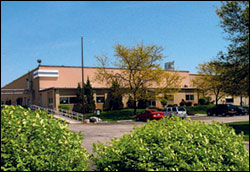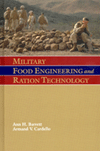

Shifting markets, industry consolidation, and as every plant manager knows, a workforce able to handle the growing use of automated systems, all make site selection a challenge.
”When we ask food companies what is most important to them, the answer is workforce,” said Dennis Jordan, vice president, project development for Priority One, part of the Cedar Rapids/Iowa City Technology Corridor. Economic development groups across the U.S. are addressing the issue by sponsoring and supporting training programs not only in community colleges and technical schools, but now at the high school level.
Priority One takes a unique slant in attracting food and beverage manufacturers with a “cluster approach,” where similar manufacturing industries are located near each other. The cluster provides not only a community with the right skill set, but an area where suppliers and equipment service companies are located close by. For example, Proctor & Gamble located a new plant in Iowa next to a bottle supplier. According to Priority One, the cluster approach builds a larger and more qualified workforce.
“Training issues are so important, they have become a negotiation point in the site selection process,” according to Bob Price, senior site selection consultant with Lockwood Greene.
Access to a skilled labor force that is affordable is just one of the factors that must be weighed in the process. Because new food and beverage products are brought to market so quickly, the pace of site selection is accelerating, says Don Schjeldahl, director of The Austin Company’s facilities location group. “Fifty percent of our customers want to look at existing buildings,” he said. Existing structures offer significant advantages over greenfield projects, often shaving six months off the time needed to complete the project.Tanimura & Antle worked with The Austin Company to turn a 140,000 sq. ft. former Sunny Delight beverage plant in Plymouth, Indiana, into a state-of-the-art salad mixing and packaging operation for its Salad Time product. The recently completed project spanned seven months and includes a 35,000 sq. ft. renovation for new 36? coolers, a QA equipment room, a QA lab, laundry and technical offices. Utility improvements include an upgrade of the ammonia refrigeration system with central plant compressor repairs and new evaporators, air compressor, nitrogen, chlorine, citric acid and soap dispensing systems and a new process wastewater system.
“The majority of site selection prospects, regardless of industry, look for an existing building that meets their needs,” said Pam McDonough, director of the Illinois Department of Commerce and Community Affairs (DCCA). In the food industry, McDonough stated, companies ideally want to occupy a building that has previously been a food plant because it meets specialized building needs such as high sanitary standards. “Another important trait is the accessibility to an adequate water supply,” she emphasized.
Utility requirements, wastewater treatment and transportation issues must be addressed and balanced in the process. Another issue, according to Burt Young, director of food and beverage for Lockwood Greene, is the stagnant growth of the U.S. population. Young said that food companies are under huge pressure to consolidate not only plants but also product lines. Many food manufacturers, such as Quaker Oats, who once shipped directly to customers are now building regional distribution centers where goods from many plants are combined and then shipped to customers, he said.
Brent Sheffler, business development manager of the Virginia Economic Development Partnership, concurs. Food companies “need to reach markets in a cost-effective manner,” he said, and a central location is key to these markets. Sheffler believes that basic rationales in the site selection process have not changed. Access to the market and raw materials as well as water and land use criteria are still of utmost importance.
According to Price, screening potential sites is essential. “Infrastructure is there or not,” he said. Highways, rail, waste treatment, potential expansion for sewers, utility costs must be addressed up front. Once these issues are addressed, focus on the taxes and cost to install the facility over the next ten years in order to make the right decision, Price recommends.
Get priorities straight
Food companies must assess their priorities before setting off on a site selection process, according to Joe Raiso, president of the Cedar Rapids/Iowa City Area Development Group. When dealing with an economic development office, Raiso says that finding out what they can do for you today is one thing, but it is equally important to find out if they will support you in the long term. A good rule of thumb, he says, is to talk to other employers in the area to ask how they have been treated after they became members of the community. “Site selection is a very defined process,” says Schjeldahl. It forces companies to clearly define their objectives, especially companies who don’t do it too often, he said. “It forces them to solidify their vision.”
Sidebar:
There’s no place like home for meat processor
C&F Packing Company, a family-owned private-label manufacturer, had its origins
in the Chicago meat-packing district during the 1940s. But when the business changed
from slaughter and portion control to value added meat products, the company relocated
to the Chicago suburb of Elk Grove Village in 1986.To meet growing demand for its products, C&F began a 16-month search for a site to build a new plant, concentrating its efforts in Illinois and Wisconsin.
According to Joe Freda, Sr., president and owner of C&F Packing, one of the challenges he faced was potential sites which were unreceptive to a food processing plant. “They thought we were going to have live animals and slaughter them. We also had a hard time finding a site large enough for our needs that was also large enough for future expansion.”
C&F decided to purchase nearly 15 acres in the Park Place Business Center in Lake Villa, Illinois. The parcel included substantial wetland and environmentally sensitive areas. The challenge was to build a facility that blended with established park covenants and integrated with residential and community areas close to the site.
The Lake Villa site offered a few attractive incentives. It was centrally located for labor, accessible to the owners, had ample access to the interstate highways and was logistically strong. McClier managed the project for C&F and helped them receive a variance to combine two pieces of property in the park. This allowed for long-term expansion plans that include a secondary entry at the far end of the site and more freezer space.
C&F was also drawn to the Park Place Business Park because of its water rates, the incentive package provided by the city and the land price. The site was also chosen because of the cooperation received from Lake Villa municipal groups including the fire, police and sanitation departments, said Brian P. Smith, vice president, McClier. “There was a common effort to work out issues as they arose. They all remained helpful throughout the process.”
During the site selection project C&F considered neighboring states. Some locations offered reasonable land prices and good utility programs, but labor was a significant challenge. One location required a lease back program, but C&F wanted to own the building. C&F also considered moving back to Chicago’s meat packing neighborhood, but found it would not be as cost-effective as the Lake Villa site.
In the end, labor availability was one of the largest factors in C&F’s decision. Lake Villa provided access to the type of labor pool and wage rates that C&F needed to maintain a competitive position in building its new 114,000 sq. ft. plant. Finished late last year, the plant completely separates raw product operations from cooked operations and features a freezer that allows C&F to process 125 truckloads completely racked.
For more information:Don Schjeldahl, The Austin Company, don.schjeldahl@the austin.com, 440-544-2617
Pam McDonough, Illinois DCCA, director@commerce.state.il.us, 217-785-3233
Burt Young, Lockwood Greene, byoung@lg.com, 513-587-7030
Jeff Jendryk, McClier, jendryk@mcclier.com, 312-373-7620
djordan@cedarrapids.org, 319-398-5317
Brent Sheffler, Virginia Economic Development Council, bsheffler@yesvirginia.org, 804-371-0175


